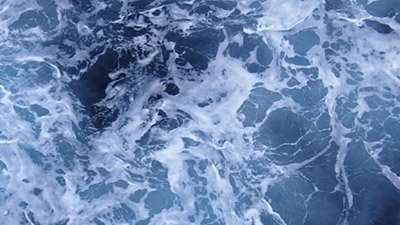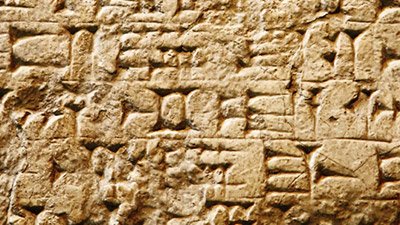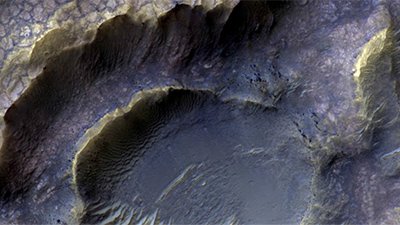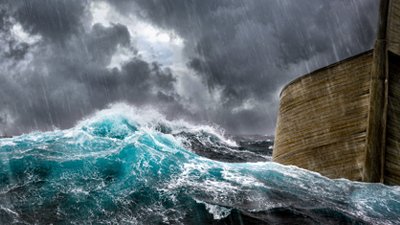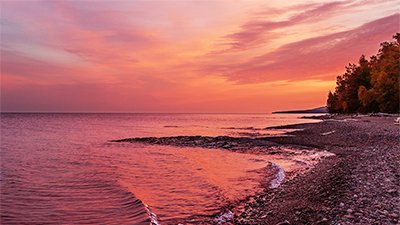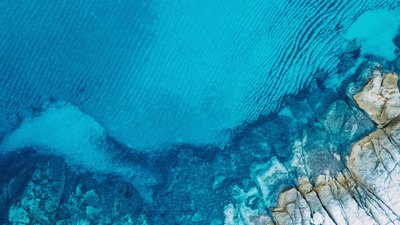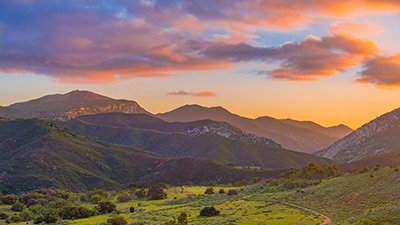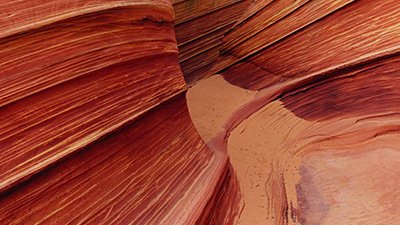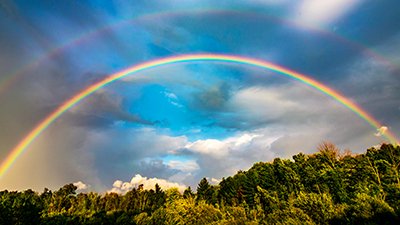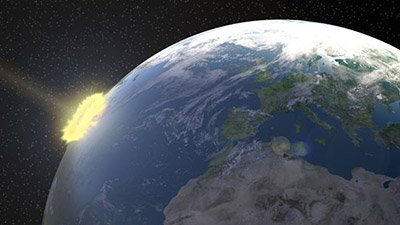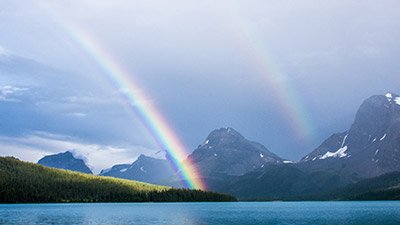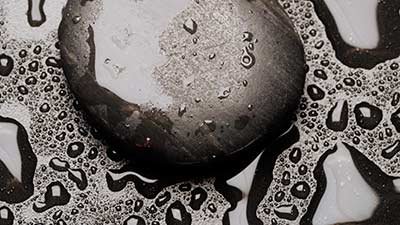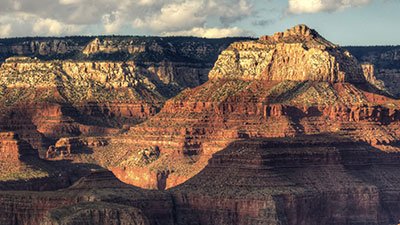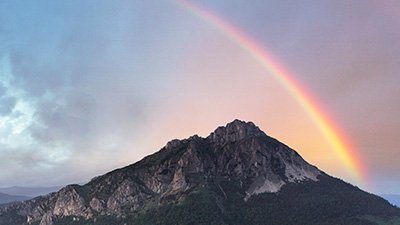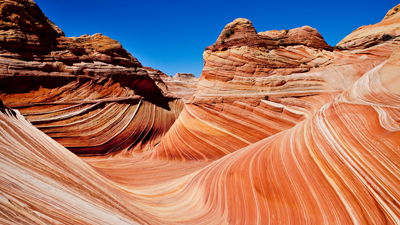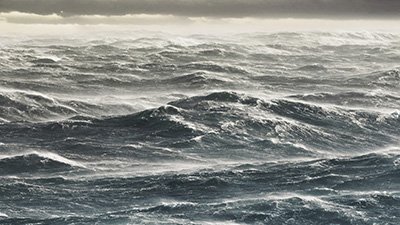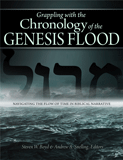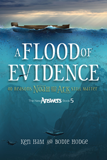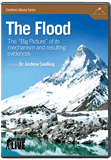The Flood
The Flood of Noah’s day (2348 BC) was a year-long global catastrophe that destroyed the pre-Flood world, reshaped the continents, buried billions of creatures, and laid down the rock layers. It was God’s judgment on man’s wickedness and only eight righteous people, and representatives of every kind of land animal, were spared aboard the Ark.
Noah’s Flood: a Historical, Global Catastrophe
Examining the immense biblical data for Noah’s flood as an actual, year-long, worldwide, and catastrophic flood about 4,500 years ago.
Was Noah’s Flood Global?
Did Noah experience a local flood which left only a few sediment layers, as floods do today? God’s record is clear: the water covered the entire globe and killed all the animals on earth. Such unique conditions are the only way to explain worldwide fossil-bearing layers thousands of feet deep.
Local Floods Help Us Understand Noah’s Flood Geology
Geologists repeatedly discover the catastrophic effects of local flooding on the earth’s surface, resulting in the same conclusion each time: that substantial amounts of water can have the same geological effect in a short period of time (even laying down rock layers) that hypothesized millions of years of slow water flow would have.
Noah Did More than Build an Ark
Like people today, almost certainly the people of Noah’s day were busy enjoying the pleasures of life and did not believe or care that judgment was coming. In 2 Peter 2:5, Noah is described as a “preacher of righteousness
.”
Psalm 104 and the Flood
Psalm 104:6–9 sheds important additional light on the geological effects of the Flood. “The mountains rose, the valleys sank down to the place which You established for them” (vs. 8).
The Flood Topics
-
Catastrophism
Are current, slow geologic processes the key to understanding earth’s past, or was history marked by a global, earth-shaping catastrophe?
-
Flood Legends
Flood legends abound globally across many distinct cultures. These legends point to the reality of the global Flood and the integrity of the account in Genesis.
-
Global Flood
Was the Genesis Flood merely a localized event or was it a global catastrophe that judged and destroyed the world of that time?
-
Ice Age
How should the Ice Age, glaciers, and wooly mammoths be understood within the framework of the Bible’s history?
-
Thinking Outside the Box
The purpose of the articles in this series is to raise ideas about Noah, his world, the Ark, and the Flood in ways that most people have not considered before.
Articles About The Flood
-
April 11, 2025 from Ken Ham Blog
Is the biblical account of the global flood and Noah’s ark “indefensible”? Well, that’s what apologist William Lane Craig recently told Latin American Christians.
-
Nov. 19, 2024 from Answers Magazine
You can’t separate the truth about God’s work in the physical world from spiritual truths without drastic consequences.
-
May 19, 2024 from Answers Magazine
Secular scientists see evidence of global catastrophe on Venus and Mars. So why can’t they admit the evidence on earth?
-
May 11, 2024 from Answers in Depth
God ensured the ark was well-suited to withstand the flood.
-
Nov. 29, 2023 from Answers Magazine
Forests in Antarctica? This frigid, forbidding continent is full of surprising evidences for the worldwide flood.
-
July 30, 2023 from Answers Magazine
Christians need not be intimidated by “scientific” pronouncements that deny the clear words of Genesis. Evidences for the flood are everywhere if your assumptions don’t blind you to them.
-
July 1, 2023 from Answers Magazine
How can we be sure there was a worldwide flood as the Bible claims? These five strong evidences show that the catastrophic event really happened.
-
May 16, 2023 from Answers in Depth
Genesis highlights the global extent of the flood with language and themes that echo the Genesis 1 creation account.
-
Nov. 13, 2022 from Answers Magazine
We can only imagine what happened after the Flood! Consider five major examples of catastrophes that reshaped the planet.
-
July 1, 2022 from Answers Magazine
God blessed Noah’s obedience—but that doesn’t mean life after departing the ark was easy.
-
Oct. 1, 2021 from Answers Magazine
When you look closely at Lake Superior’s landscape, you’ll see evidence of a catastrophic past.
-
March 30, 2021 from Feedback
Where is all that water [from the Flood] now? Our planet is covered in 70% water, so the water from the Flood is still here, making up our oceans!
-
April 18, 2020 from The New Answers Book 4
The Scriptures are silent on the issue of whether there were any volcanoes or earthquakes in the world before the Flood, but we do know there were mountains.
-
Jan. 8, 2020 from The New Answers Book 4
How could neat uniform sedimentary rock layers be deposited during the Flood cataclysm with all the fast-moving waters?
-
June 29, 2019 from Answers Magazine
Geologists are uncovering evidence that meteors struck the earth throughout the Flood. Could they even have played a role in starting the Flood?
-
Nov. 18, 2018 from Answers Magazine
What evidence do we see that a global Flood devastated the earth’s surface during Noah’s day—on a scale unlike anything we see today?
-
Aug. 2, 2018 from Answers in Depth
Sometimes nature gives us a glimpse at the possibilities during the flood. Such a glimpse was provided by a recent ice storm on the mountains of Hawaii.
-
March 18, 2018 from Answers Magazine
According to God’s Word, the great Flood of Noah’s day was the most devastating catastrophe in history. Noah’s Flood ripped apart the earth. We’re not talking about boulders but whole mountains. In some places, slabs the size of cities slid dozens of miles in minutes.
-
BlogThe Purpose of the FloodNov. 21, 2016
As Christians we need to consider the account of the Flood (and other judgement passages) in light of what the Bible states about God and humanity.
-
Sept. 4, 2016 from Answers Magazine
People often refer to rock layers as though the earth is made of solid rock, impervious to water. Thankfully, this isn’t true.
-
July 1, 2016 from Answers Magazine
We’ve always heard that oil and water don’t mix, but sometimes water and water don’t mix.
-
July 1, 2016 from Answers Magazine
Some Christians claim Noah’s Flood was local, and it doesn’t really matter what we believe about it. Does this view hold water?
-
June 28, 2016 from Answers in Depth
Animals can show up in the oddest places and make evolutionists scratch their heads as is the case with the newly discovered monkey fossils.
-
May 8, 2016 from Answers Magazine
Misunderstandings are on full display when it comes to the biblical account of the Flood. Are you guilty of any of these ten common misconceptions?
-
Magazine Department ArticleOcean Full of CommotionJan. 1, 2016 from Answers Magazine
The timing could not be better for AiG’s new VBS for 2016—Ocean Commotion!
-
Nov. 1, 2015 from Answers Magazine
The Flood is impossible because one of the Grand Canyon’s layers was deposited in a desert. Or so evolutionists claim. Do the facts back them up?
-
Aug. 22, 2015 from Answers Magazine
These beautiful bows remind me of my parents’ teaching of what the Bible says about God’s purpose in giving us the rainbow.
-
Feedback: “Bill Nye the Straw Man Guy” RebuttalAug. 4, 2015
We do not reject any evidence that is found, whether it is an ancient tool or fossilized bones. What we often reject are the interpretations of this data.
-
March 5, 2015 from The New Answers Book 3
Have you ever been “tongue-tied” when asked to provide geologic evidence that the Genesis Flood really did occur, just as the Bible describes?
-
More Than One Language Before the Flood?Sept. 15, 2014 from Thinking Outside the Box
We know mankind had one language after the Flood, before God confused the languages at Babel. Could other languages have formed prior to Noah’s Flood?
-
Book ChapterHow Could Fish Survive the Genesis Flood?June 16, 2014 from The New Answers Book 3
God only brought to the Ark representatives of all the created kinds of air-breathing, land-dwelling creatures. How did freshwater and saltwater fish survive?
-
Magazine Department ArticleChronology CheckJan. 1, 2014 from Answers Magazine
Are dominant views about Flood chronology true to Scripture?
-
Semi-Technical In-Depth ArticleHow Did Plants Survive the Flood?Oct. 10, 2012 from Answers in Depth
Many critics of the Genesis account of history scoff at the idea of plants and seeds lasting for a year in fresh and salt water, therefore discounting the biblical account of the Flood.
-
National Trust Caves to Pressure at CausewayOct. 6, 2012 from News to Know
National Trust caves in to pressure at the Causeway.
-
Book ChapterTimes of RecessionApril 24, 2012 from Demolishing Supposed Bible Contradictions: Volume 2
Critics assert that two different dates are given for when the earth was dry after the global Flood. Michael Belknap, AiG–U.S., explains.
-
New Technique Reveals Oceanic Evidence For the FloodOct. 22, 2011 from News to Know
Abruptness of ancient oceanic alterations fit the Flood.
-
Semi-Technical Magazine ArticleDid Mercury Poisoning Create a Toxic Flood?April 1, 2010 from Answers Magazine
Wouldn’t the destructive forces of Noah’s Flood have released so much mercury into the environment that it would poison everything and make life impossible?
-
Psalm 104:6-9—the Flood or Day Three of Creation Week?July 28, 2009
Old-earth creationists such as Hugh Ross claim Psalm 104:6–9 refers to the Creation Week, but a closer look shows otherwise.
-
Death Valley Stream Shows Range of Geological ChangesFeb. 2, 2008
Amid the otherworldly Death Valley of California, geologists are seeing a 1941 stream diversion carve out the land before their very eyes.
-
Dec. 26, 2007 from Answers Magazine
This is a series of articles explaining the evidences from geology for the Genesis Flood.
-
Magazine Department ArticleA Thai to the FloodOct. 1, 2007 from Answers Magazine
A giant oyster shell found on land is yet another reminder of the global Flood.
Recommended Resources

Answers in Genesis is an apologetics ministry, dedicated to helping Christians defend their faith and proclaim the good news of Jesus Christ.
- Customer Service 800.778.3390
- © 2025 Answers in Genesis


